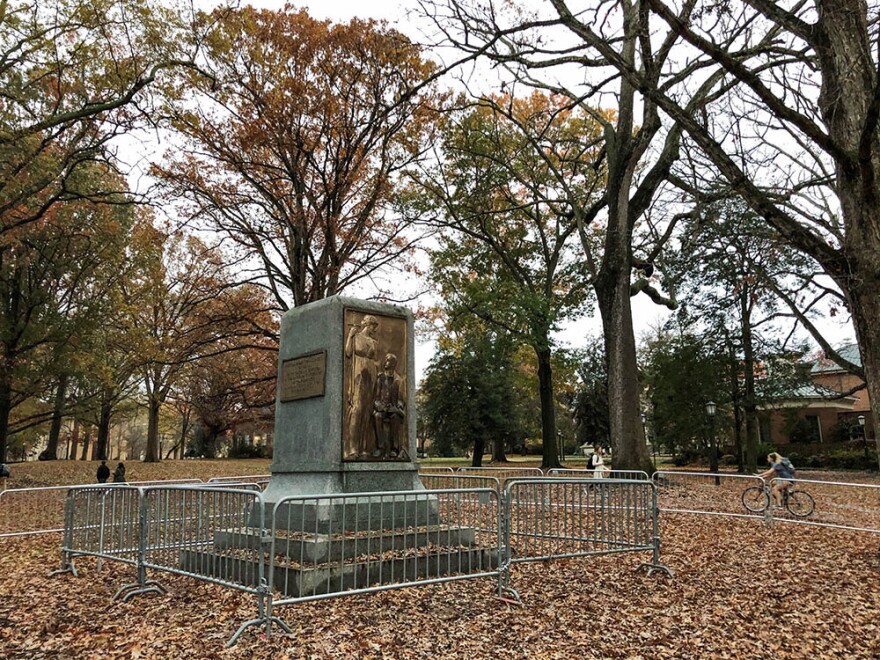Updated 1:10 p.m.
Officials with the UNC-Chapel Hill Board of Trustees have to recommend a new on-campus history center to house Silent Sam, the Confederate monument that was toppled by protesters earlier this year.
At a meeting Monday moring, UNC Chancellor Carol Folt said the university evaluated 20 specific sites for the statue, including its original location on McCorkle Place near the entrance of UNC. She said public safety makes it impossible to return the statue to its original base or an outside location, and police recommended Silent Sam be put in a 'single purpose building.'
Folt said the Odum Village site is where a new center for education and history would be constructed to house the Confederate monument and contextualize it and other parts of UNC history. The proposed site is south of the university's hospital and west of its basketball stadium.
Folt said the on-campus location meets strict criteria under state law governing Confederate monuments and other objects of remembrance.
According to the final report, the likely completion date for the project would be early to mid-2022. University officials estimate the capital cost associated with the proposed center at $5.3 million plus another $800,000 in annual operating costs.
The UNC Board of Governors will review the plan at its December 14 meeting.

Silent Sam Statue Has Long History Of Opposition And Support
"Silent Sam" had stood on a main campus quad from 1913 until it was torn down by protesters who decried what they described as its racist origins.
UNC isn't the first university to grapple with Confederate monuments and ultimately decide to move one indoors. The University of Texas has removed several Confederate statues from outdoor display, including a statue of Confederate President Jefferson Davis taken down in 2015 and now displayed in a museum.
North Carolina's law on historical monuments allows relocation in only narrow circumstances, such as to preserve the artifact or because of construction. University attorney Mark Merritt said the proposal meets those criteria because the statue was vandalized and ultimately toppled in its previous location and because of planned changes at the McCorkle Place quadrangle that many call the university's "front door."
Under the state law, a new location for a monument must be similarly prominent and accessible; the university's proposal says the new building housing "Silent Sam" will be in the middle of "the next area of growth for campus." The proposed site was previously home to housing for students with family. The university has been tearing down buildings there to prepare it for new phases of campus.
The new building would also have room to hold classes and display other historical exhibits to contextualize the university's history, Folt said. She said it was too early in the planning to discuss a detailed timetable for construction. The written proposal said a likely completion date would be in 2022.
For more than a year before its toppling, "Silent Sam" had been the site of protests that intensified after a deadly 2017 white nationalist demonstration in Charlottesville, Virginia. In the weeks after Silent Sam was torn down, demonstrations for and against the statue continued, leading to arrests. Amid these protests, the university vowed to come up with a "legal and lasting" plan for the statue, taking input from students, alumni, faculty and others. It's been stored in an undisclosed location while the university developed a plan for it.
Already, critics of the statue have complained in online postings that the new plan is too expensive and that the statue has no place on campus, calling for renewed protests.
The Associated Press contributed to this report.











